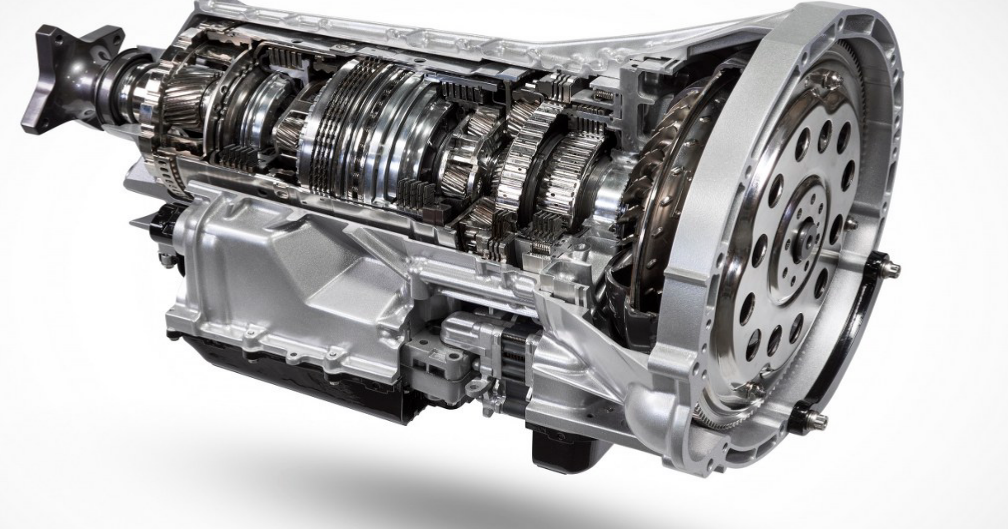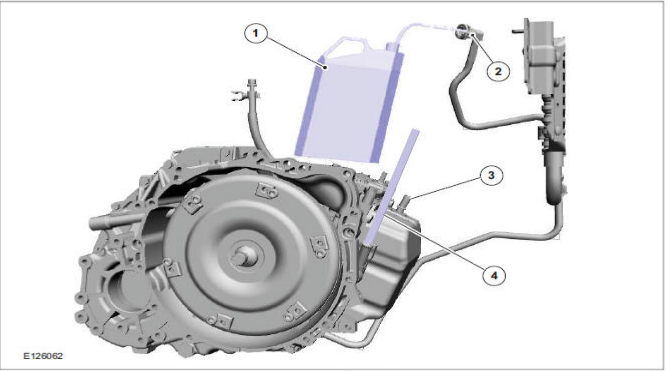A transaxle combines transmission and differential, often used in front-wheel-drive cars.
Mechanical Distinctions
Key Components of a Transmission
A transmission is an intricate mechanical component that primarily manages the power generated from an engine to drive the wheels. Some key components include:
- Clutch: This disengages and engages the transmission from the engine. It ensures smooth transitions between different gears.
- Gearbox: Housing a set of gears, the gearbox plays a vital role in adjusting the speed and torque delivered to the wheels. Gears come in various sizes to offer multiple speed ratios.
- Output Shaft: Connected to the gearbox, this component carries the adjusted torque to the vehicle’s wheels.
- Torque Converter: Present in automatic transmissions, this replaces the clutch and helps in maintaining engine power during gear shifts.

Major Parts of a Transaxle
A transaxle combines functionalities of both the transmission and the differential in front-wheel-drive cars. Its components are:
- Differential: Distributes power between the left and right wheels, ensuring they can spin at different speeds, especially crucial during turns.
- Final Drive: This consists of a set of gears that deliver power from the transmission section to the differential.
- Gear Sets: Similar to a transmission, transaxles have gear sets that determine the speed and torque ratios for the wheels.
- Shaft: Transaxles consist of input and output shafts. The input shaft receives power from the engine, while the output shaft sends it to the wheels.
More about Transaxle on Wikipedia
How They Function
Both transmissions and transaxles work to regulate power from the engine to the wheels. The transmission focuses on altering speed and torque through gear ratios, ensuring optimal engine performance. On the other hand, a transaxle is more comprehensive, handling both power transmission and differential tasks, especially suited for front-wheel-drive vehicles. By integrating these systems, transaxles save space and offer efficient power distribution in vehicles.
Comparative Analysis
Benefits of Using a Transmission
A transmission, whether manual or automatic, is an essential component in most vehicles. Here are some advantages:
- Versatility in Choices: Transmissions come in both manual and automatic variations, catering to diverse driving preferences. Manual transmissions allow drivers more control over their vehicle’s performance.
- Efficiency in Rear-Wheel Drives: For rear-wheel-drive (RWD) vehicles, traditional transmissions can offer better weight distribution, leading to improved vehicle dynamics and balance.
- Durability: With proper maintenance, some transmissions, especially manual ones, can last longer than their counterparts.
- Cost-Effective Maintenance: Often, repairing a standard transmission can be less expensive compared to more complex systems like transaxles or continuously variable transmissions (CVTs).
More about Manual Transmission on Wikipedia

Advantages of a Transaxle
Transaxles, commonly found in front-wheel-drive (FWD) vehicles, offer their unique set of benefits:
- Space Efficiency: Integrating the transmission and differential into one unit, transaxles save valuable space, making them ideal for compact cars.
- Weight Distribution: In FWD vehicles, having a transaxle helps in centralizing the weight towards the front, ensuring better traction, especially in slippery conditions.
- Simpler Drivetrain: In vehicles where space is a premium, a transaxle simplifies the drivetrain by eliminating the need for long driveshafts or additional components.
- Optimized for FWD: Transaxles are inherently designed for front-wheel-drive applications, optimizing the power delivery and performance of such vehicles.
Applications in Vehicles
Types of Vehicles with Transmissions
Virtually every motorized vehicle relies on some form of transmission to transfer engine power to the wheels. Here’s a breakdown of common vehicles that employ transmissions:
- Passenger Cars: Almost all passenger vehicles, from sedans to SUVs, use transmissions. Depending on the market and user preference, both manual and automatic versions are prevalent.
- Trucks: Heavy-duty trucks, particularly those used for transport and construction, often come equipped with specialized transmissions that can handle higher torques and loads.
- Motorcycles: Motorbikes and scooters usually have manual transmissions, albeit with variations that differ from car manual transmissions. The clutch operation and gear shifts are managed by hand and foot controls.
- Sports Cars: Many high-performance sports cars use advanced transmission systems, like dual-clutch transmissions, to deliver rapid gear shifts and enhance acceleration.
More about Dual-Clutch Transmissions on Wikipedia
Vehicles that Utilize Transaxles
Transaxles are distinct in their application, primarily found in:
- Front-Wheel Drive Cars: Given that transaxles combine both the transmission and differential into one unit, they’re an inherent choice for most front-wheel-drive cars, optimizing space and weight distribution.
- Some Rear-Engine Vehicles: Vehicles with rear engines and rear-wheel drive, like some sports cars, might also use transaxles. This placement aids in achieving better balance and weight distribution.
- Compact and Subcompact Cars: Given the space efficiencies provided by transaxles, many compact and subcompact vehicles, which prioritize space-saving, opt for this system.
- Certain Racing Vehicles: In motorsports, where weight distribution and compactness are crucial, some racing vehicles employ transaxles for better performance.

Considerations for Replacement
When to Replace a Transmission
A vehicle’s transmission is integral for its optimal functioning, and there are clear signs when it needs replacement:
- Slipping Gears: If your car suddenly changes gears without any apparent reason or has difficulty staying in gear, it’s a sign the transmission may be wearing out.
- Delayed or Rough Shifting: Experiencing a delay when shifting out of park or feeling hard shifts between gears indicates issues.
- Unusual Noises: Transmissions in distress might produce clunking, whining, or buzzing sounds, especially in neutral.
- Warning Lights: Modern vehicles come with transmission fluid and temperature warning lights. If these come on, it might be a signal that the transmission is overheating or facing other issues.
- Fluid Leaks: Transmission fluid is essential for its smooth operation. If you notice spots or puddles underneath your vehicle, it’s a clear sign of leakage which requires immediate attention.
More about Transmission Fluid on Wikipedia
When a Transaxle is More Suitable
While transmissions are common, there are scenarios where considering a transaxle is a more fitting choice:
- Compact Vehicle Design: If designing a compact or subcompact vehicle where space conservation is paramount, a transaxle’s integrated system provides a compact solution.
- Front-Wheel Drive Orientation: For vehicles specifically designed with a front-wheel-drive system, transaxles offer better weight distribution at the front, leading to improved traction.
- Desire for Simplified Drivetrain: In situations where reducing the number of components in the drivetrain is a priority, transaxles offer a two-in-one solution by combining the differential and transmission.
- Optimal Weight Distribution: Especially in rear-engine sports cars, a transaxle at the back helps evenly distribute weight, ensuring better handling and balance.

Economic Implications
Cost of Transmission vs. Transaxle
When considering the costs associated with transmissions and transaxles, various factors come into play. Generally, the initial cost can be quite similar, but the type of vehicle, labor rates, and regional factors can cause variability.
- Initial Purchase: On average, a new transmission for common passenger vehicles can range from $1,500 to $3,000. Transaxles, due to their integrated design, might cost slightly more, ranging from $2,000 to $3,500, but this can vary depending on the make and model of the car.
- Installation and Labor: The labor costs for installing a transmission can vary, typically ranging from $500 to $1,200. Transaxles, due to their combined nature, might sometimes require more labor, pushing the labor costs to around $600 to $1,500.
- Additional Costs: Other economic considerations include potential updates or modifications to related components. For instance, when replacing a transmission, one might also consider changing the clutch in manual cars, adding to the overall cost.
Maintenance and Longevity
Maintenance and the longevity of the transmission or transaxle system play a significant role in the total cost of ownership.
- Regular Maintenance: For transmissions, routine maintenance, including fluid changes, can cost between $80 and $250 every 30,000 to 60,000 miles. Transaxles might have similar maintenance costs but may occasionally lean on the higher side due to their dual-function nature.
- Longevity: With proper care, a standard transmission can last between 100,000 to 200,000 miles. Transaxles, due to their integrated design, might sometimes have a slightly shorter lifespan, averaging around 150,000 miles. However, regular maintenance can significantly improve the lifespan of both.
- Unexpected Repairs: Transmissions and transaxles are both intricate systems. Unexpected repairs, not accounted for in regular maintenance, can cost anywhere from $500 to $2,500 depending on the severity of the issue.
More about Car Maintenance on Wikipedia
While both systems have their pros and cons, understanding the economic implications of transmissions versus transaxles can guide consumers in making informed decisions for both initial purchase and long-term ownership.
